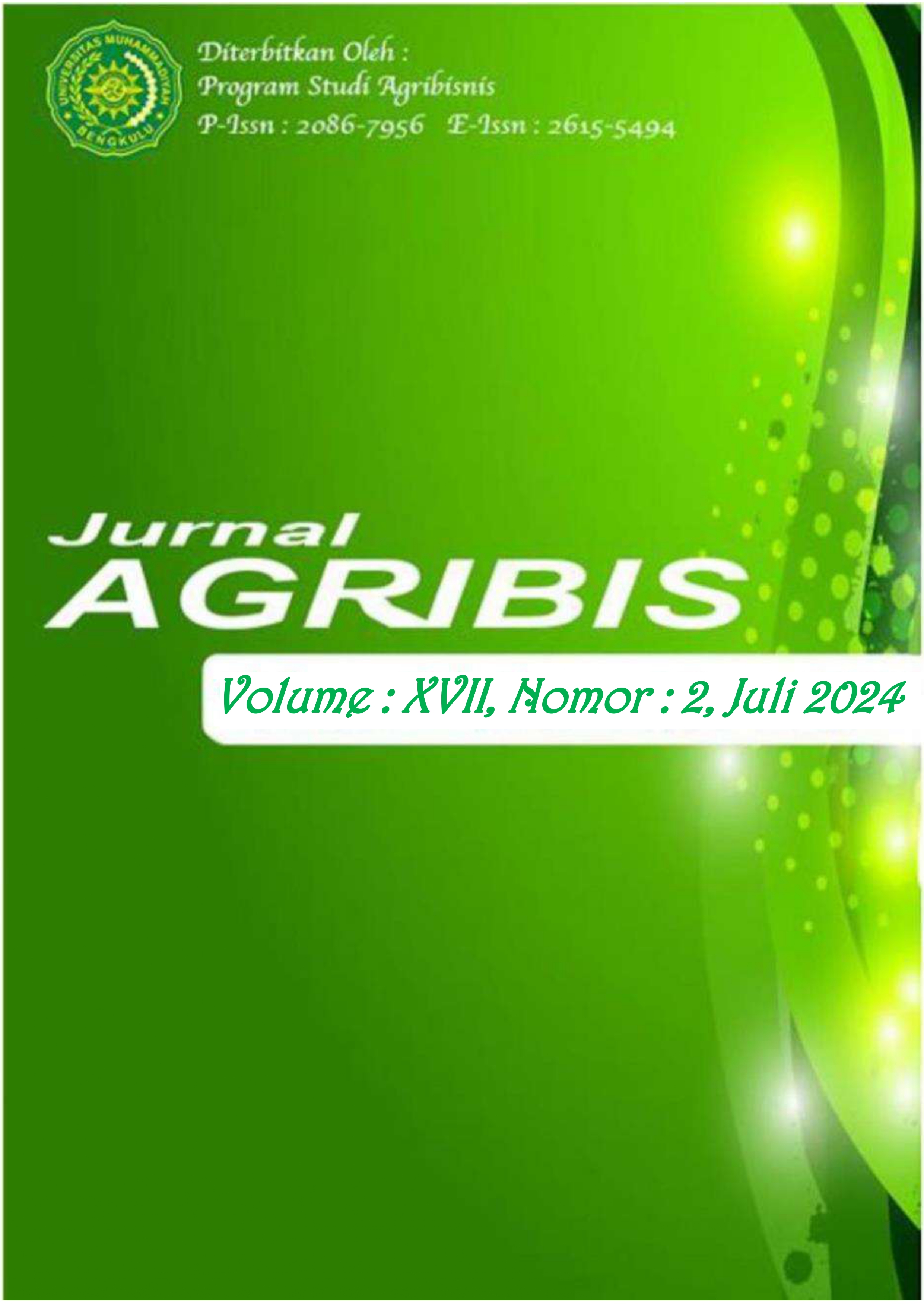Analisis Komparatif Penentuan Komoditas Hortikultura Pada Lahan Rawa Dataran Rendah Di Kabupaten Banyuasin Sumatera Selatan
DOI:
https://doi.org/10.36085/agribis.v17i2.6635Abstract
Achieving optimal commodity diversification returns requires reference to the most profitable commodity types. Not all types of annual crops are suitable for development. Lebak swamp land is one of the lands that can be utilised for the development of horticultural commodities. The amount of authority in implementing regional policies has both positive and negative impacts on agricultural development. Most local regulations are made with the aim of increasing local government revenues. With planning, an estimate (forecasting) is made of the potential, prospects, obstacles and risks faced. The aim is to provide an opportunity to select the best alternatives and choose the best combination. Location Quotient (LQ) analysis is used to determine comparatively base or non-base activities in an area. Based on the results of the LQ analysis in Banyuasin Regency, it is known that long beans are the base in 11 sub-districts followed by chillies as the base commodity in 9 sub-districts, watermelon is the base in 8 sub-districts, and eggplant is the base in 7 sub-districts. Curly Chillies and Cucumbers are the base in 5 sub-districts followed by Tomatoes which are the base of horticultural production in 4 sub-districts in Banyuasin Regency. The development of horticultural commodities needs to consider chilli as a priority commodity to review Banyuasin Regency is one of the areas included in the Save the Swamp to Improve the Farmers (SERASI) programme in South Sumatra. The development of horticultural commodities in Banyuasin Regency must be supported through capital formation, new innovations, research and development, and improvement of human resources and infrastructure.







